Mandevilla Bug Infestations And Cures: Dealing With Mandevilla Pest Problems
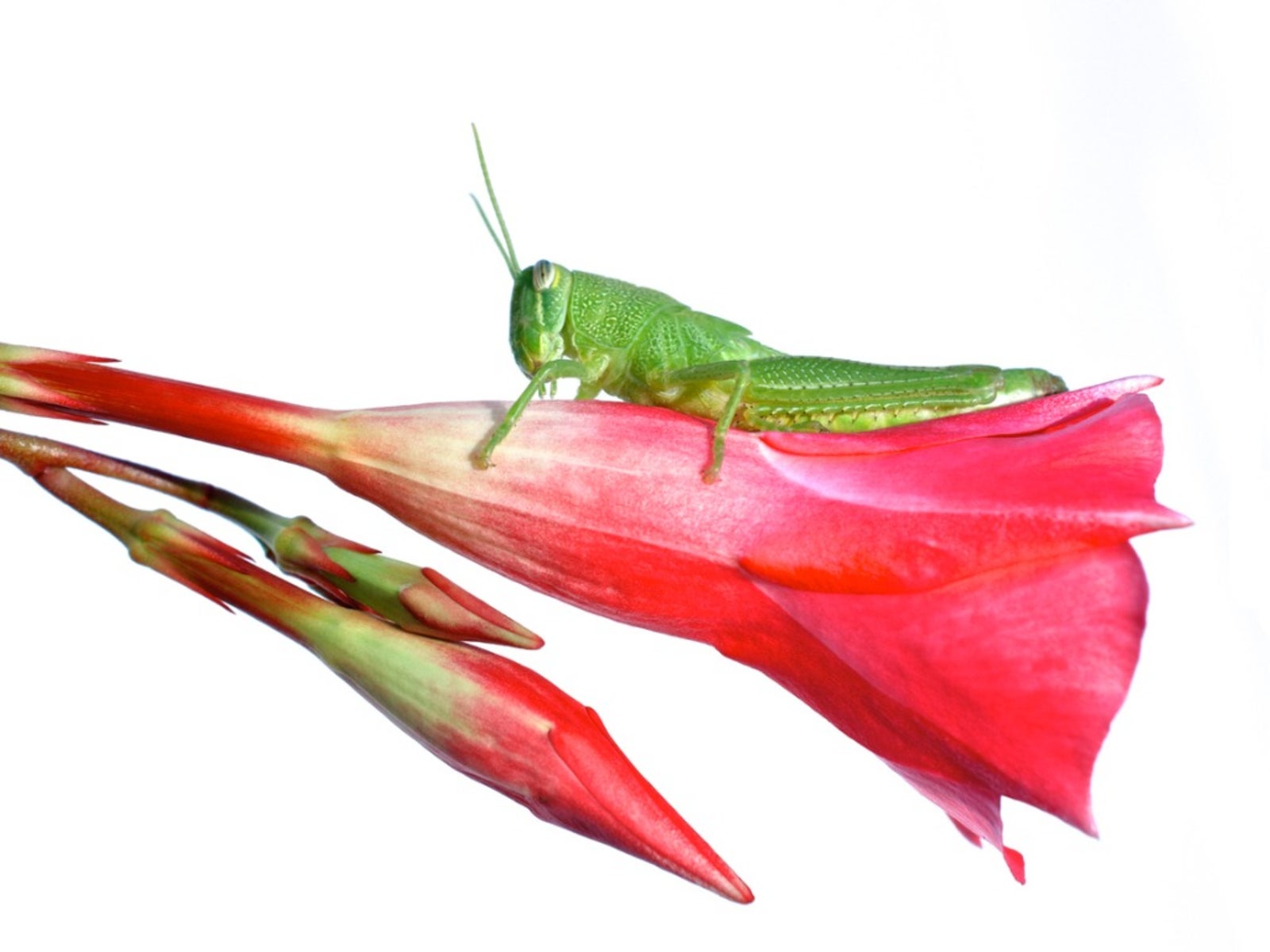

There's nothing stopping your tough and beautiful mandevillas as they scramble up the brightest trellis in the garden -- that's why these plants are such favorites with gardeners! Easy and carefree, these vines rarely fail; when they do, it is often because of the few insect pests of mandevilla. Read on to better understand mandevilla bug infestations and cures.
Mandevilla Pest Problems
Mandevilla vines are tough plants, but even they are subject to a few pest insects that can cause real problems. Bugs on mandevilla vine are easy to treat if they're caught early, but you'll have to keep a close eye out for them since these insects often remain well-hidden.
Mealybugs
Mealybugs leave small piles of waxy debris on the branch crotches of mandevilla vines, feeding nearby or on the undersides of leaves. These pests produce copious amounts of honeydew as the pests feed on plant juices, causing leaves below feeding sites to appear sticky or shiny. Ants may cluster near these sites, collecting the honeydew and defending the mealybugs from harm. Spray your plant with insecticidal soap and recheck it often for signs of mealybugs. If leaves continue to yellow and drop, you may need to spray your plant weekly to destroy new mealybugs as they emerge from their waxy egg sacs.
Scale
Scale insects are the most difficult of the mandevilla pests; they are experts at camouflage, often appearing as irregular growths or waxy deposits on stems and leaves. Some scale produce honeydew, like mealybugs, but insecticidal soaps will rarely take them out due to their hard coverings. Neem oil is the spray of choice for scale, and weekly spray treatments are the norm. If you notice the scale bugs are changing colors or your plant begins to recover, lift some of the scales' hard covers to check for signs of life.
Spider mites
Spider mites are usually difficult to see with the naked eye, but their damage is unmistakable -- individual leaves are suddenly covered in tiny, yellow dots that may grow together before the leaf dries and falls off the plant. Spider mites also weave fine strands of silk where they're feeding, which can aid in your decision to treat them. Spider mites are attracted to dusty conditions, so if your plant isn't too punky, start by spraying down any dry spots and cleaning the dust off your plant's leaves, especially indoors. If spider mites persist, insecticidal soap or neem oil are recommended.
Whiteflies
Whiteflies are tiny, moth-like insects that congregate in large groups on the undersides of leaves. They cause similar damage to mealybugs, stressing leaves until they drop, but are extremely visible and easy to identify. You may notice tiny white insects flying up when you bump your plant or walk too close; check the plant carefully for feeding sites when it starts to look unwell. Whiteflies drown easily, so they can usually be cured with regular sprays from a garden hose.
Gardening tips, videos, info and more delivered right to your inbox!
Sign up for the Gardening Know How newsletter today and receive a free copy of our e-book "How to Grow Delicious Tomatoes".

Kristi Waterworth was a regular contributor to Gardening Know How for many years, answering countless queries on plant pests and diseases.
-
 15 Best Vegetables To Plant In May For A Summer Bounty Of Fresh Homegrown Produce
15 Best Vegetables To Plant In May For A Summer Bounty Of Fresh Homegrown ProduceGet planting your dream garden with these best vegetables to start in May – including options for direct sowing, indoor seed-starting, and planting seedlings.
-
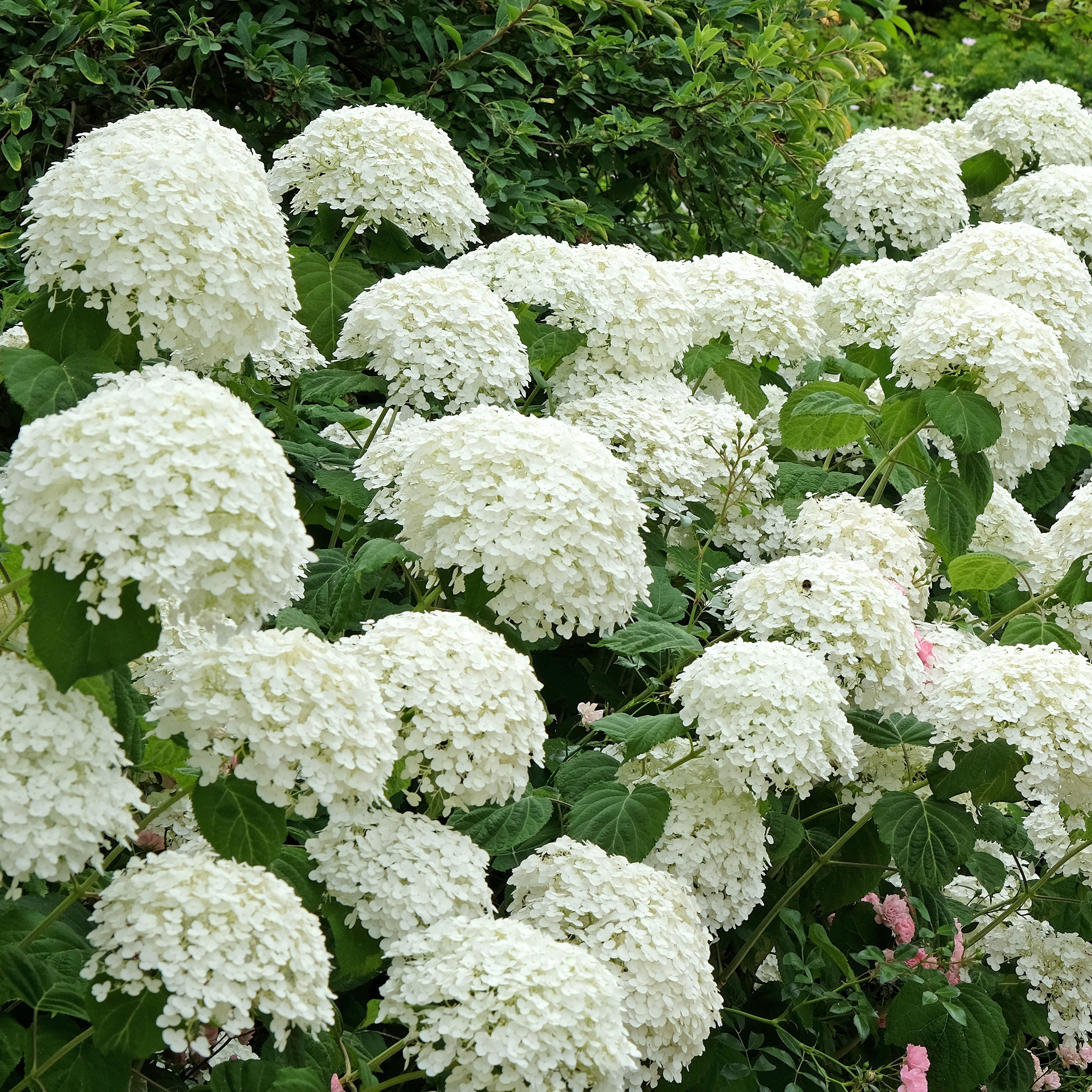 Native Hydrangea Varieties In North America – 8 Sensational Smooth And Oakleaf Varieties For Hardy Blooms And Multi-Season Beauty
Native Hydrangea Varieties In North America – 8 Sensational Smooth And Oakleaf Varieties For Hardy Blooms And Multi-Season BeautyHydrangeas are beloved for their enduring visual dynamics – but if you go native, they’re even better. Here are the most captivating native hydrangea varieties you can grow
-
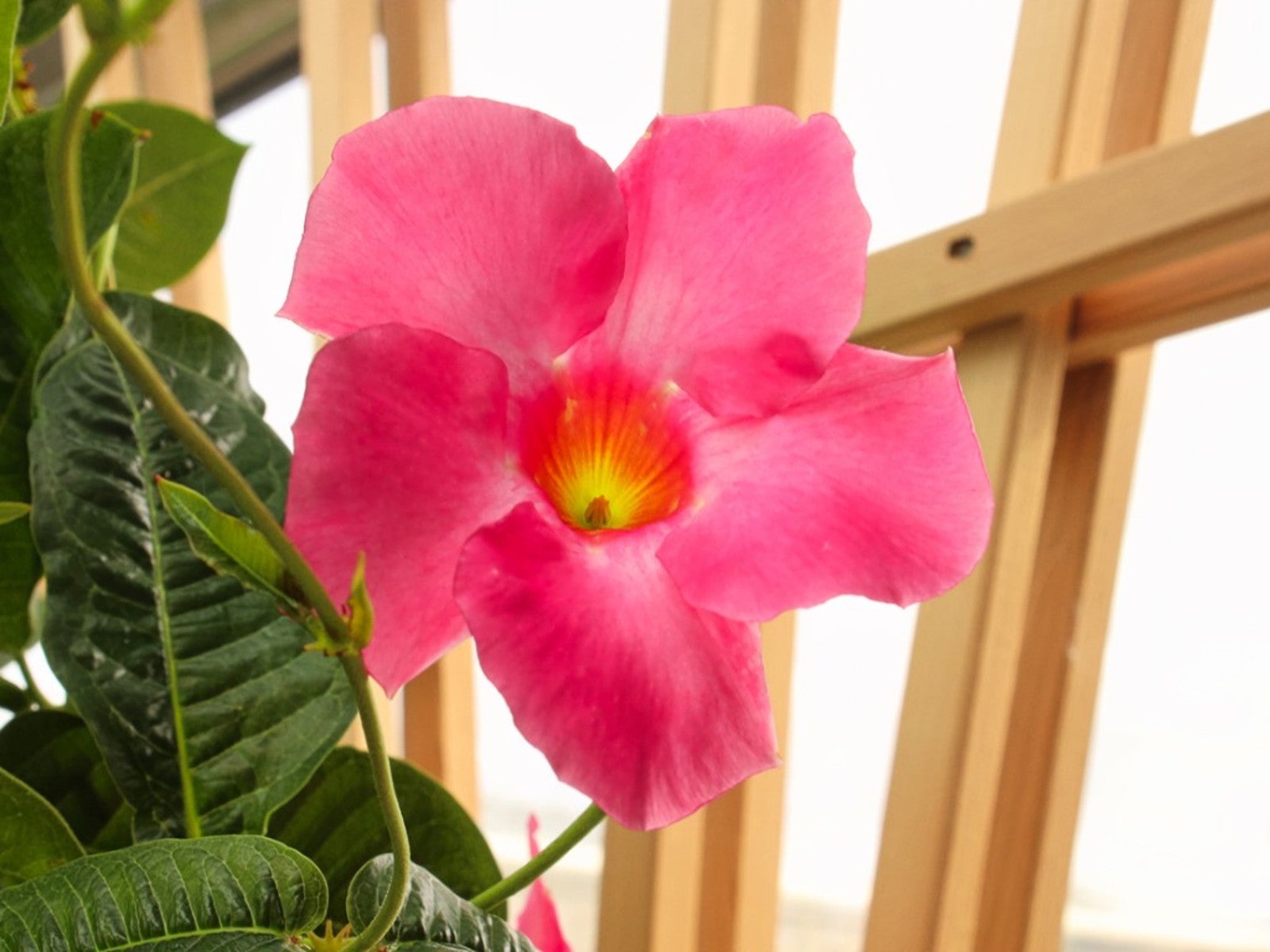 How Much Light Does A Mandevilla Need Indoors?
How Much Light Does A Mandevilla Need Indoors?You can overwinter a beautiful mandevilla indoors, but it has special lighting needs. Read on to learn more about it.
-
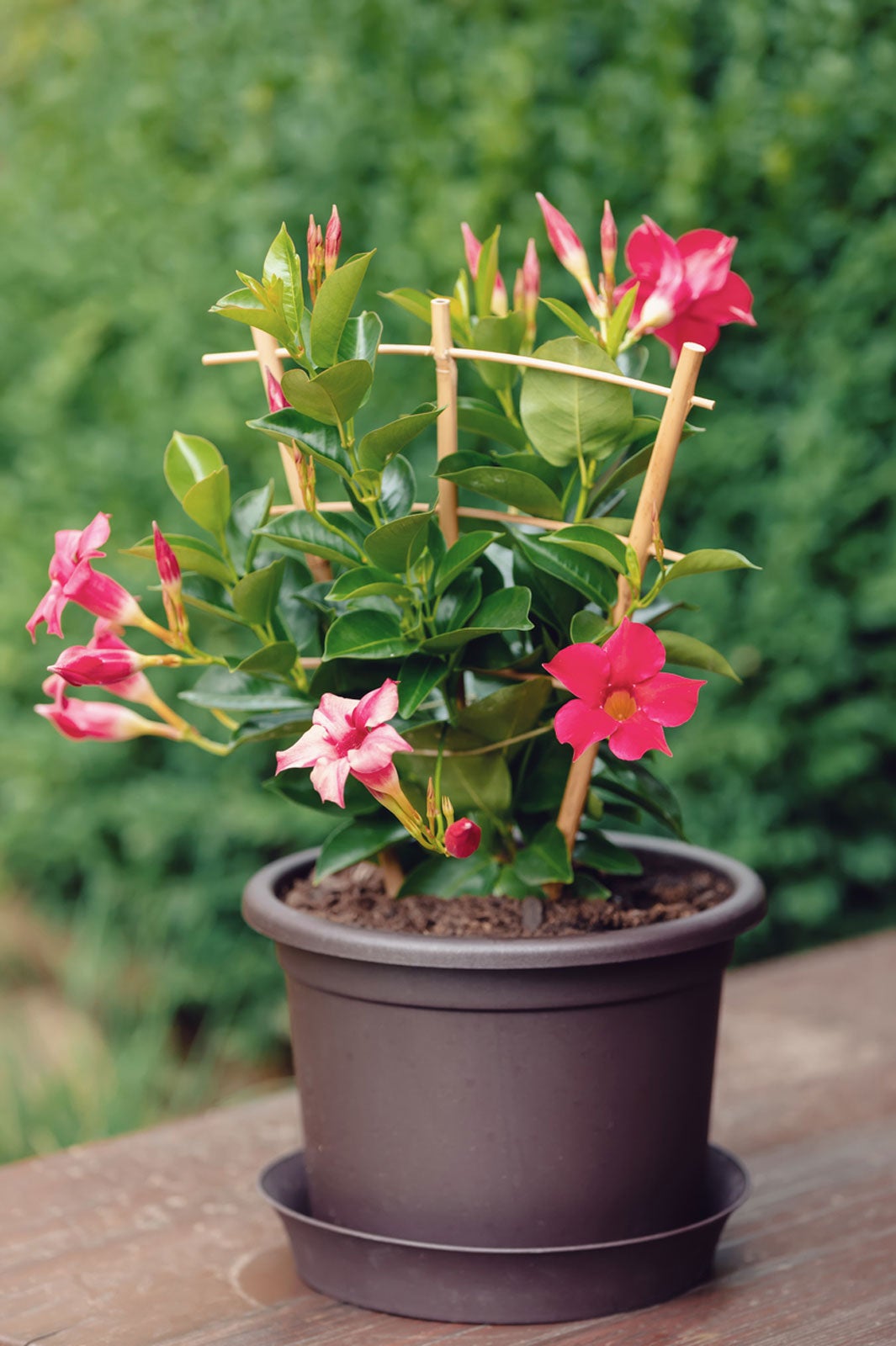 Repotting Mandevilla Plants: Learn How To Repot Mandevilla Flowers
Repotting Mandevilla Plants: Learn How To Repot Mandevilla FlowersMandevilla is a reliable flowering vine with stunning, trumpet-shaped blooms. In cooler climates, it is grown as an indoor plant. Occasional repotting is necessary to keep the plant healthy and repotting mandevilla isn’t difficult. This article will help.
-
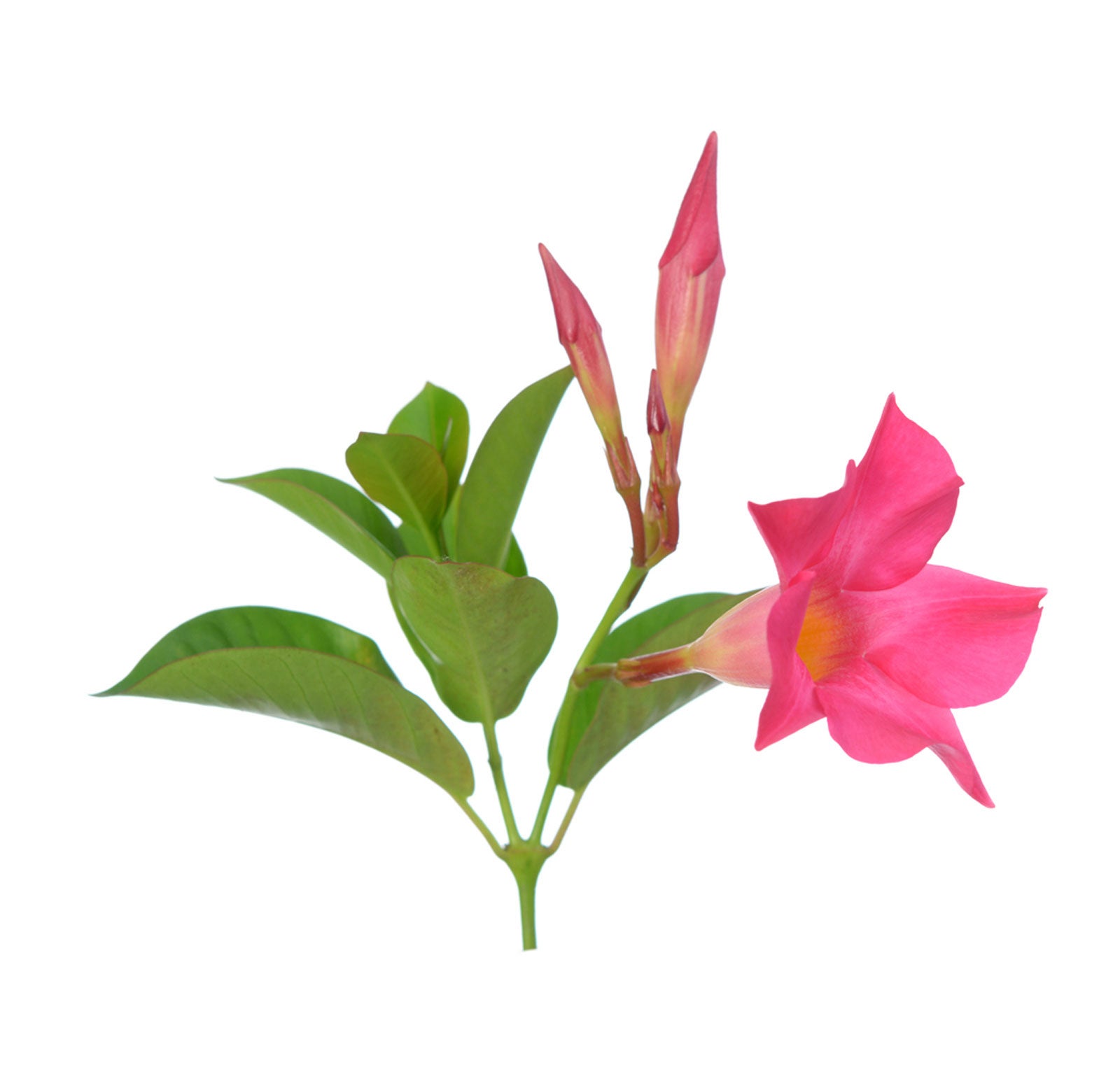 Dipladenia Cutting Propagation – How To Root Dipladenia Cuttings
Dipladenia Cutting Propagation – How To Root Dipladenia CuttingsDipladenia is a tropical vining plant similar to Mandevilla. Many gardeners grow these vines from cuttings to grace a garden bed or patio. Perhaps, you are interested in growing this lovely vine for yourself. For tips on how to root Dipladenia cuttings, click this article.
-
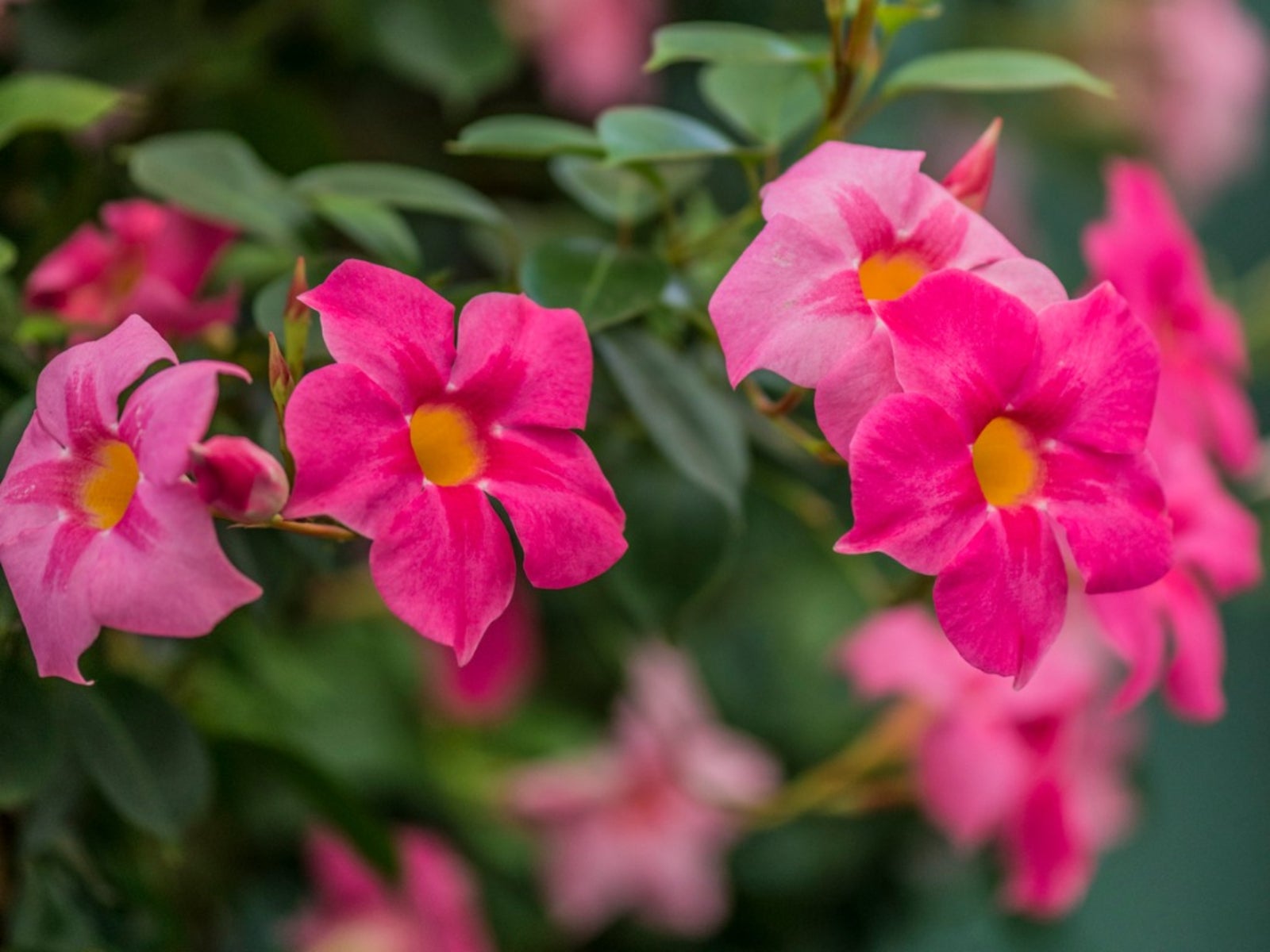 Mandevilla Plant Tubers: Propagating Mandevilla From Tubers
Mandevilla Plant Tubers: Propagating Mandevilla From TubersThere are several easy ways to start a new mandevilla plant, including seeds and softwood cuttings, but propagating mandevilla from tubers probably isn?t a viable method of propagation. Click here to learn more about mandevilla plant tubers.
-
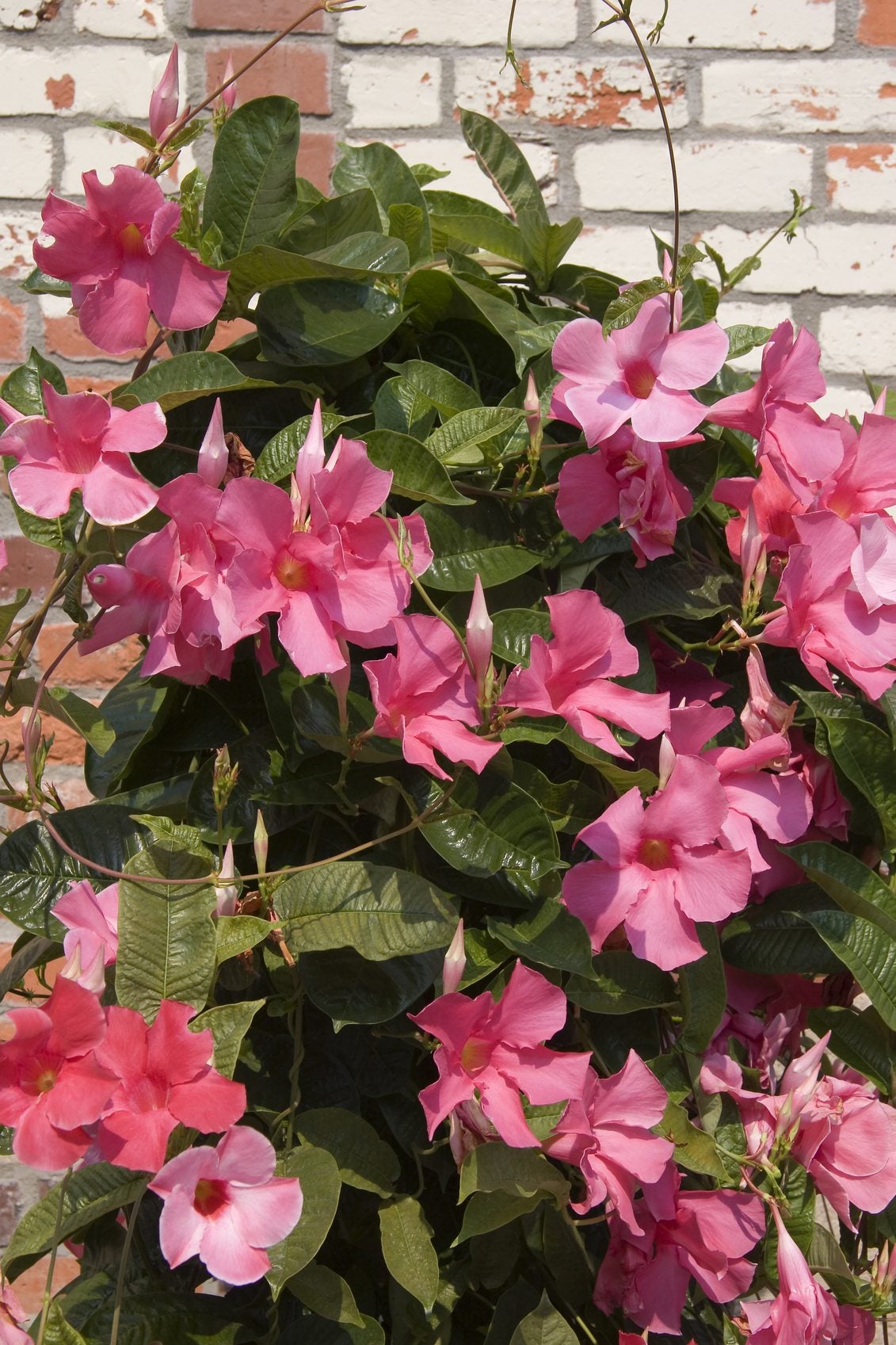 Should I Cut Back Mandevilla – When To Prune Mandevilla Vines
Should I Cut Back Mandevilla – When To Prune Mandevilla VinesIf allowed to grow untended, mandevilla can start to get an unkempt appearance and not flower as much. This is why pruning mandevilla vines at least once per year is recommended. Learn more about how to cut back a mandevilla in this article.
-
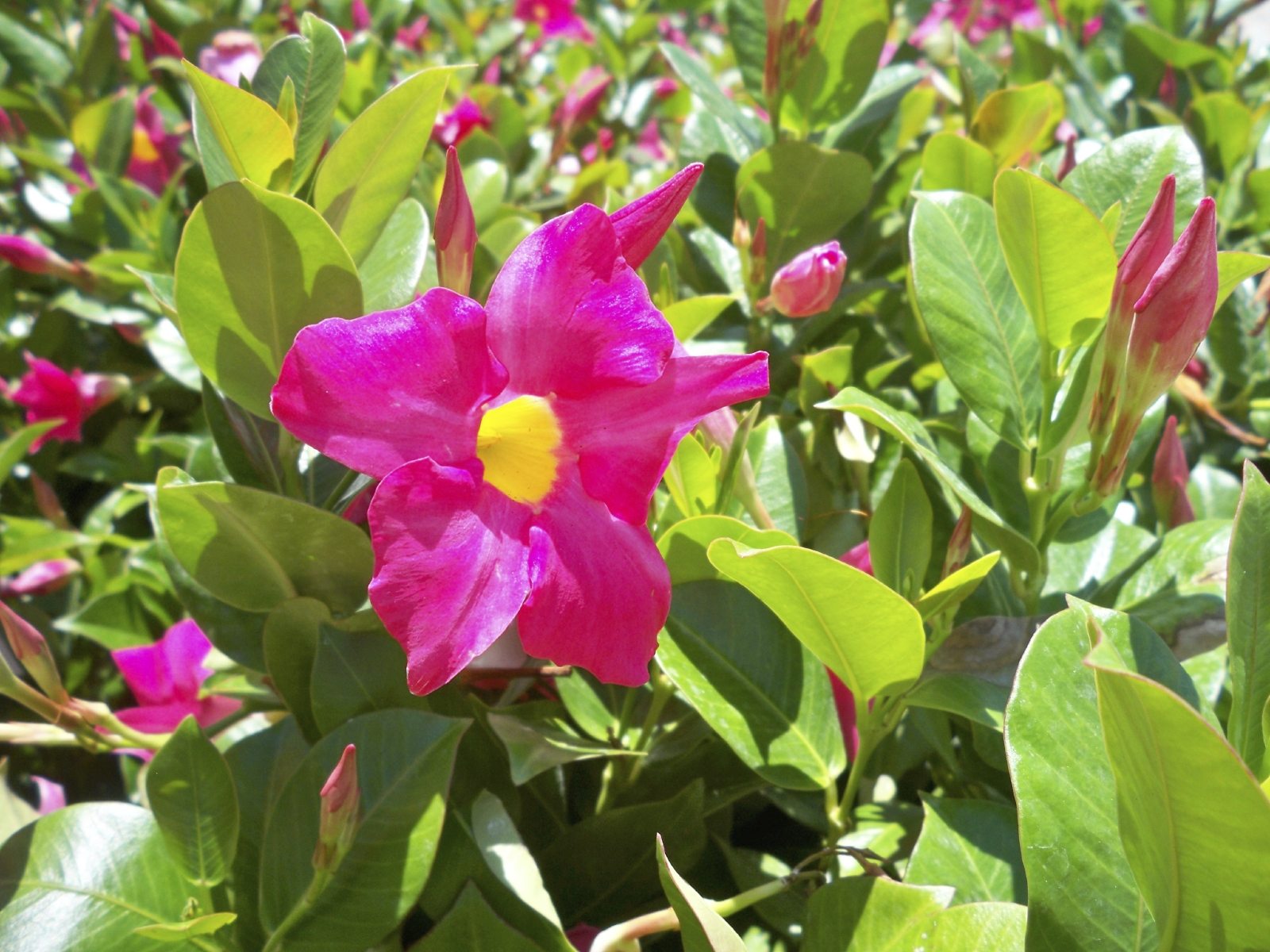 Mandevilla Ground Cover – How To Use Mandevilla Vines For Ground Covers
Mandevilla Ground Cover – How To Use Mandevilla Vines For Ground CoversA mandevilla vine can scramble over a slope as fast as it can climb a trellis, especially in areas where it is difficult to plant grass. Read this article for information about using mandevilla vines for ground covers.
-
 Mandevilla Blooming Season: How Long Do Mandevillas Flower
Mandevilla Blooming Season: How Long Do Mandevillas FlowerWhen does mandevilla vine bloom? How long do mandevillas flower? All good questions, and the answers depend on a number of factors. Read this article for specific information about the mandevilla blooming season. Click here to learn more.
-
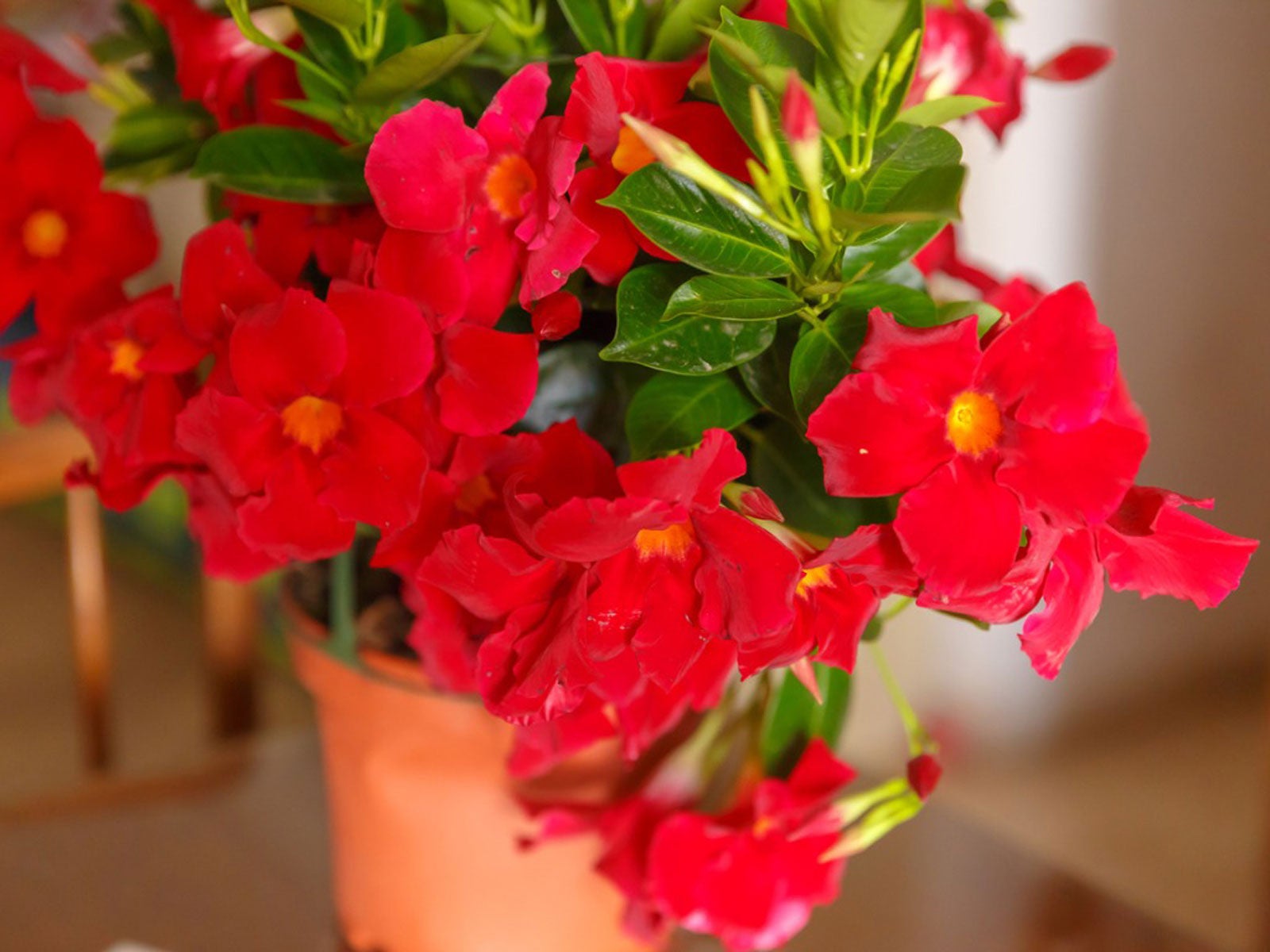 Winterizing Mandevillas: Tips For Overwintering A Mandevilla Vine
Winterizing Mandevillas: Tips For Overwintering A Mandevilla VineIf you live in a more northern climate, planting mandevilla in a container is the best way to go. Click this article for tips on winterizing mandevillas.